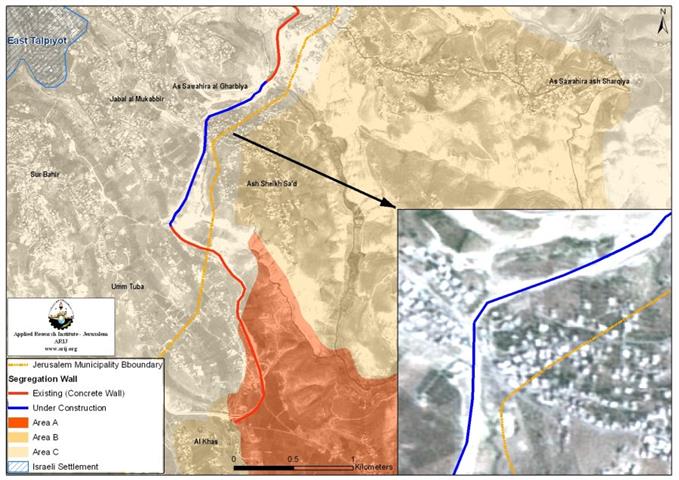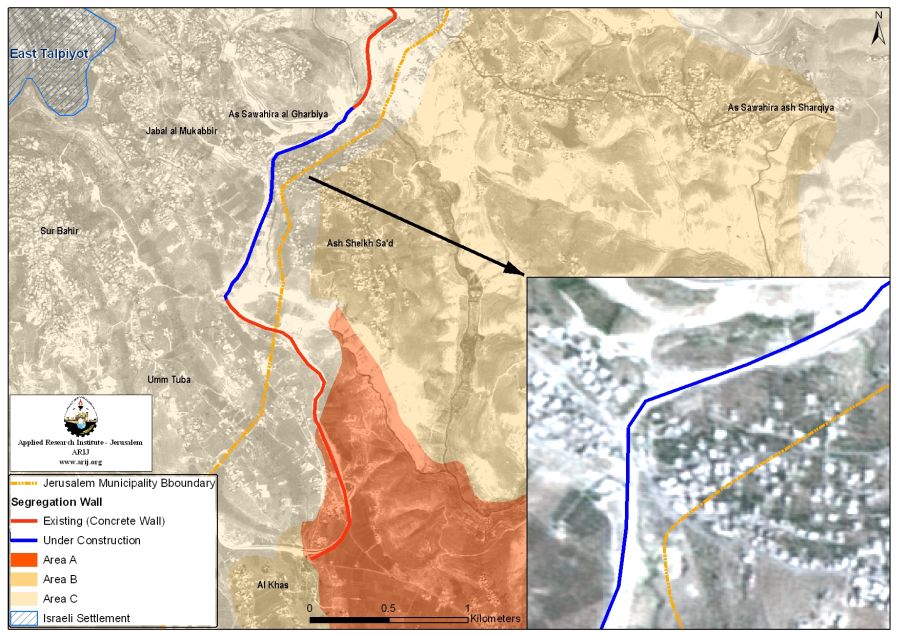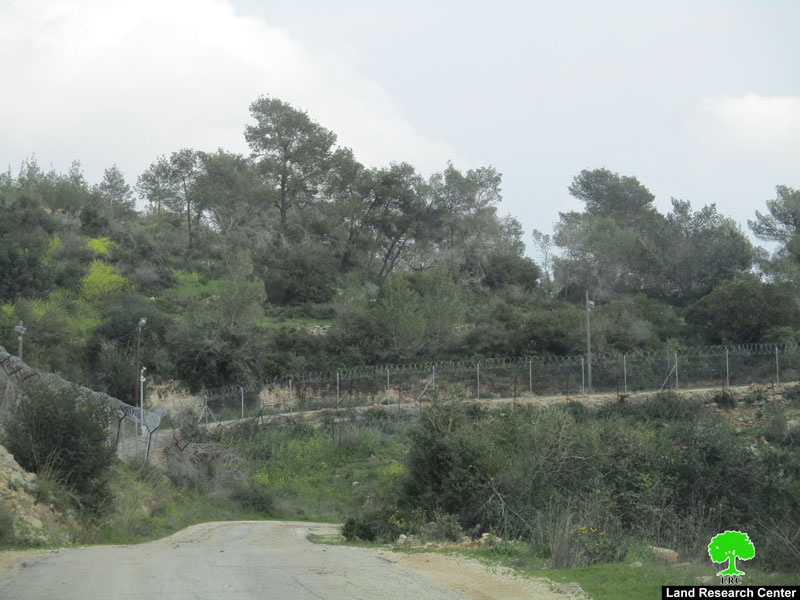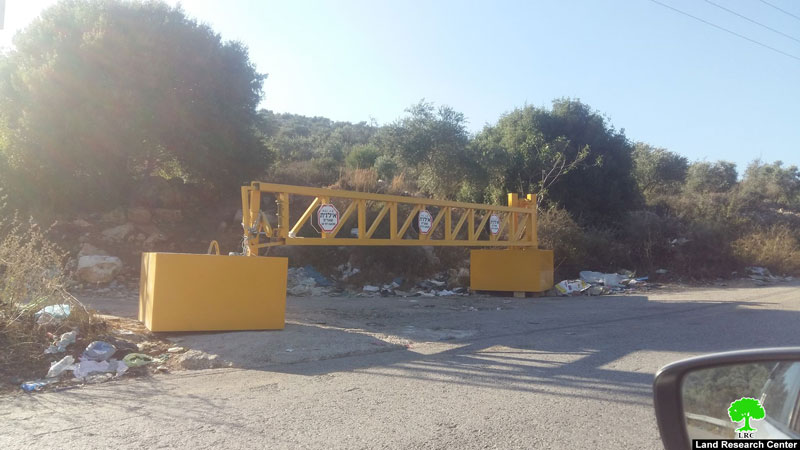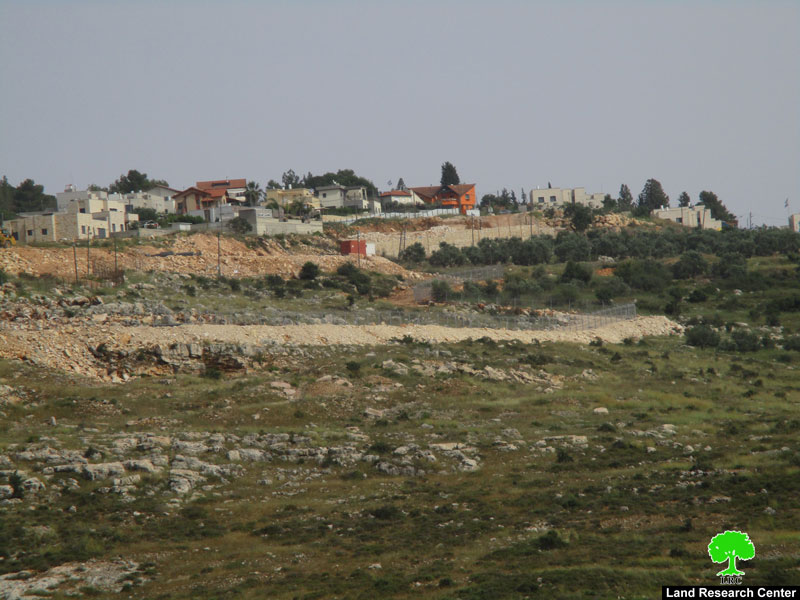Sheikh Sa'ed village is located on the eastern outskirts of Jerusalem with a population just a little under 2400 (PCBS-2005). After the 1967 War, which ended with Israel capture of the West Bank and Gaza area, the boundary of occupied East Jerusalem were redrawn according to Israeli interests and thus most of Sheikh Sa'ed village area was excluded from the Israeli newly defined boundary of Jerusalem. Later on under the Palestinian-Israeli peace process (1995), the occupied Palestinian territory was categorized to dominion areas between the Palestinians and the Israelis pending the conclusion of the interim period (1999) and the launching of final status talks. Upon these arrangements, the bulk of Sheikh Sa'ed village area was classified as area 'C', which indicates total Israeli control of the area and along with near by Jerusalemite neighborhood of Jabal Al-Mukaber further to the north, a contiguous geographical urban entity is formed to Jerusalem. (See Map 1)
The Blockade and the closure imposed on Al Sheikh Sa'ed Village:
When the Israeli Army restricted access of Palestinian residents of the West Bank and Gaza to Israel; including occupied East Jerusalem, residents of Sheikh Sa’ed of whom the majority are classified as residents of the West Bank were compelled to obtain from the Israeli civil administration; special permits that allows them to enter Jerusalem, which the residents of Sheikh Sa'ed had to do as their only mean of access to the rest of village and Jerusalem were their social and livelihood are located and literally their only way out. With the outbreak of the current Intifada back in 2000, the Israeli civil administration reduced the number of permits issued to resident of Sheikh Sa'ed and for the entire Palestinians for that matter under the pretext of 'security reasons'. The only form, to which the Israeli civil administration agreed to give permits to Palestinian, is to receive medical treatment and even those were denied and subject to selective process later on.
In September 2002, with the Intifada at its peak and the Israeli plan 'Jerusalem Envelope' is unveiled, the Israeli Army initiated steps to isolate the designated area of occupied East Jerusalem from the rest of the West Bank, which placed the greater part of Sheikh Sa'ed village out of the Israeli defined parameter of Jerusalem Envelope.
Consequently, the only road available to residents of Sheikh Sa'ed village to leave or enter their village via Jabal Mukaber village was cut off with concrete blocks, which made it impossible to enter or leave the village by vehicle; hence, residents wanting to go to Jerusalem or anywhere else in the West Bank must climb over the rigged blocks and find transportation on the other side. Moreover, Israel’s Border Police frequently patrols the area and prevents residents with Palestinian identity cards from leaving the village unless they have permits to enter Jerusalem.
The Israeli procedures against Sheikh Sa'ed village has turned the life of its residents into a living hell; unemployment has reached unprecedented records, social ties are interrupt between the alienated parts of the village, medical services is incapacitated merchandise and food supply get into the village via back to back system; all of which led to voluntarily deportation from the village; particularly those who are allowed to access Jerusalem as they were compelled to leave their houses in Sheikh Sa'ed village and go to live in East Jerusalem; within the Israeli identified parameter known as Jerusalem Envelope.
Even though, the decision to build the Segregation Wall around Jerusalem known as the Jerusalem Envelope was made back in 2003, the construction work was halted in many sections of the Wall at many areas including the section that break up the single entity of Sheikh Sa'ed village pending a ruling of the Israeli High Court of justice decision on the petitions submitted by Palestinian residents to stop Wall construction on their lands. However, the newly elected Israeli government headed by Olmert has concluded a decision to complete close off with rigged fence; all sections not completed in the Segregation Wall in the West Bank including those in Jerusalem until a decision is reached by the Israeli High Court of justice on the subject.
Repercussions of the Segregation Wall on Sheikh Sa'ed Village
- Divide the geographical unity of Sheikh Sa'ed and isolate the village from neighboring and only available outlet, Jabal Al- Mukaber and consequently Jerusalem City.
- Deny the students from Sheikh Sa'ed to pursue their education in Jerusalem and Jabal Al-Mukaber schools.
- The isolation of the village will result in the deprivation vital medical treatment in Jerusalem.
- Residents of Sheikh Sa'ed village will no longer be able to bury their dead ones in the village cemetery located the north side of Jabal Al-Mukaber area.
- Deny residents of Sheikh Sa'ed village their rights to religious freedom by eliminating their mean of access to their holiest religious site, Al-Aqsa Mosque in Jerusalem.
- University students from Sheikh Sa'ed village were compelled to drop out of universities for the hardships in transportation to Jerusalem and West Bank back and forth.
- Break-up the social ties between families living in Sheikh Sa'ed village east of the Wall and west of the Wall, as the segregation Wall will tear the village into two parts.
- The Segregation Wall will increase the percentage of unemployment among residents of Sheikh Sa'ed village, which already stands before the Wall at high levels, all of which will lead to an increase in the poverty ratio in the village and hinder development in the village.
- Destroy the Infrastructure in Sheikh Sa'ed village.
The Turning Point:
When the Israeli Army revealed the Segregation Wall route around Jerusalem, many of the Palestinian villages and neighborhoods expressed their concerns of the effects anticipated to their way of life and thus they appealed to the Israeli High court of justice against the Israeli Army Segregation Wall route plan to call off the Segregation Wall and thus avoid the devastative effects, which would fall on them as a result. Sheikh Sa'ed residents being one of those villages that appealed to remove the Israeli Army Segregation Wall, which would split the village into two separate entities; received an approval to their request from the Tel-Aviv Appeals Court and thus cancelled the Israeli Army issued order to build the Segregation Wall there. This precedent cancellation was reached when the appeal court was not convinced with the Israeli State argument that residents of Sheikh Sa'ed pose a security threat against Israel.
Conclusion:
The Israeli siege on Sheikh Sa’ed violates the basic right granted to all persons to move about freely and without restriction. Under international law, Jerusalem has the same status as other areas of the West Bank, which grants residents of Sheikh Sa’ed the right to enter East Jerusalem. Failure of Israeli authorities to provide any alternative for Sheikh Sa’ed residents to enter or leave their village breach their right to freedom of movement explicitly enshrined in 'Article 12' of the International Covenant on Civil and Political Rights and 'Article 13' of the Universal Declaration of Human Rights, which reads:
|
Article 12 Everyone lawfully within the territory of a State shall, within that territory, have the right to liberty of movement and freedom to choose his residence. International Covenant on Civil and Political Rights/ entry into force 23 March 1976, in accordance with Article 49 |
|
|
|
Article 13 Everyone has the right to freedom of movement and residence within the borders of each State. The Universal Declaration of Human Rights |
What happened in Sheikh Sa’ed village do not really exemplify the Israeli legal system at its best but actually and clearly indicates the Israeli State consciousness of the Segregation Wall repercussions to the Palestinian communities at large. This all also shows how Israeli is manipulating the 'security' pretext to facilitate the realization of the Israeli State objective, which is to capture as much possible lands from the West Bank territory; particularly in Jerusalem prior to further peace talks carried out at their will with the Palestinians.
Prepared by:
The Applied Research Institute – Jerusalem


